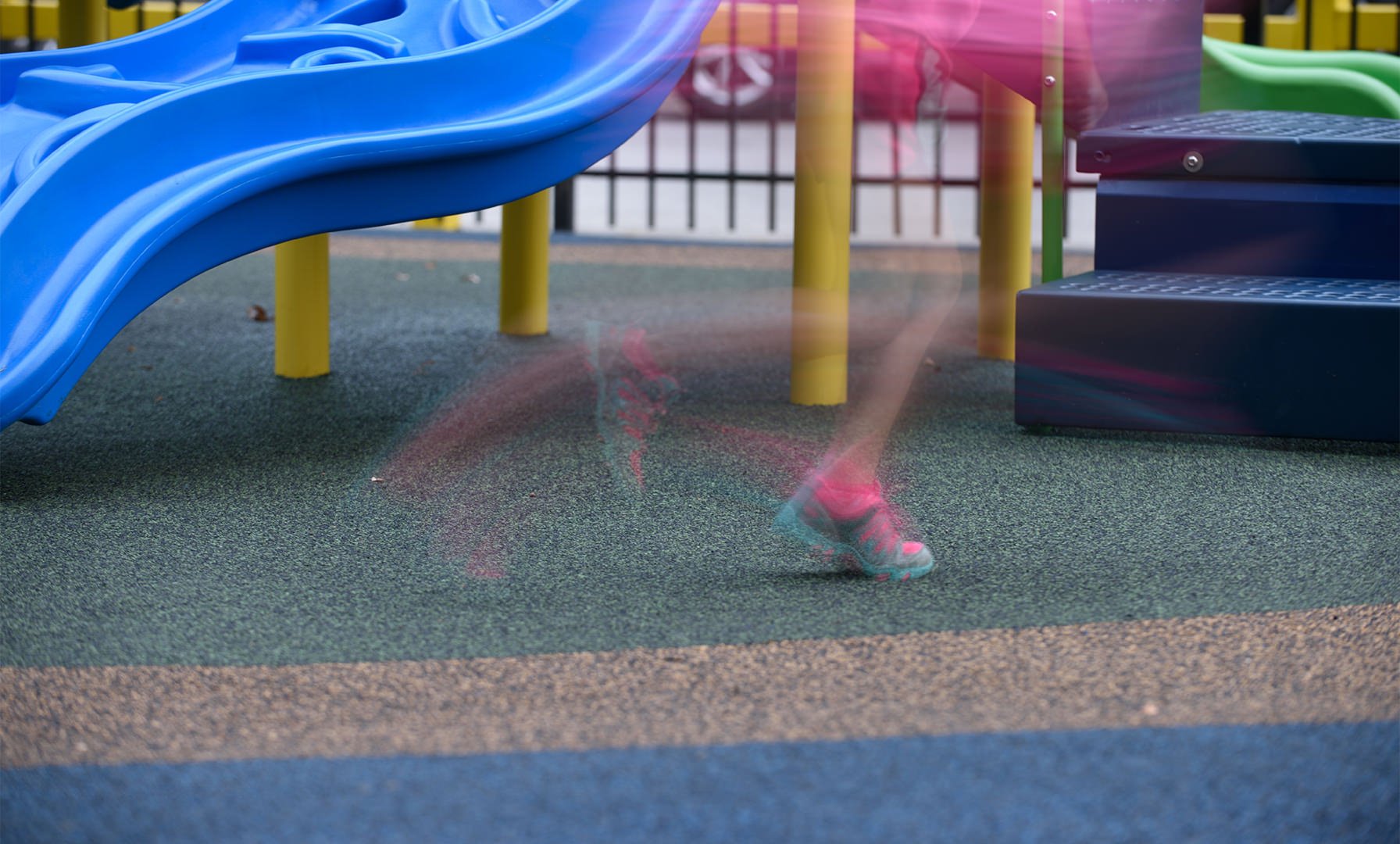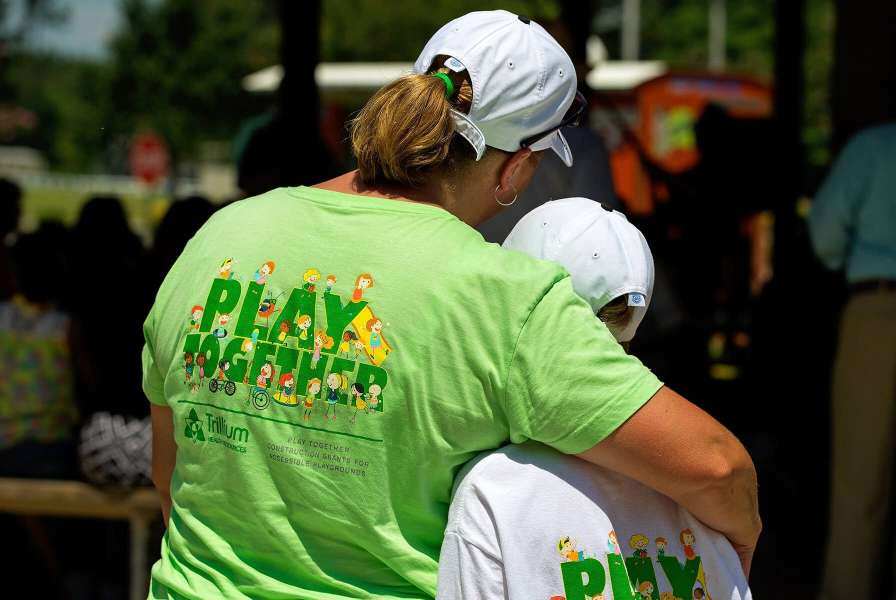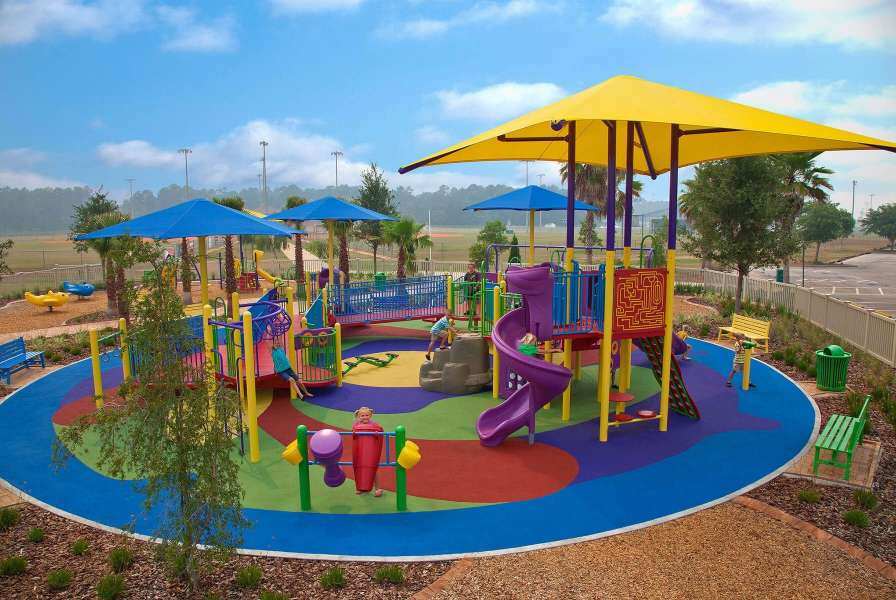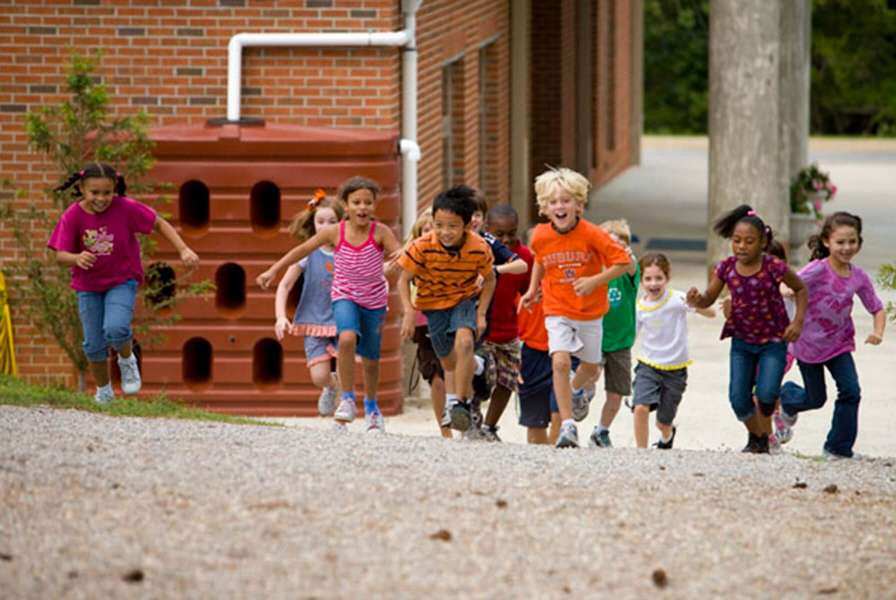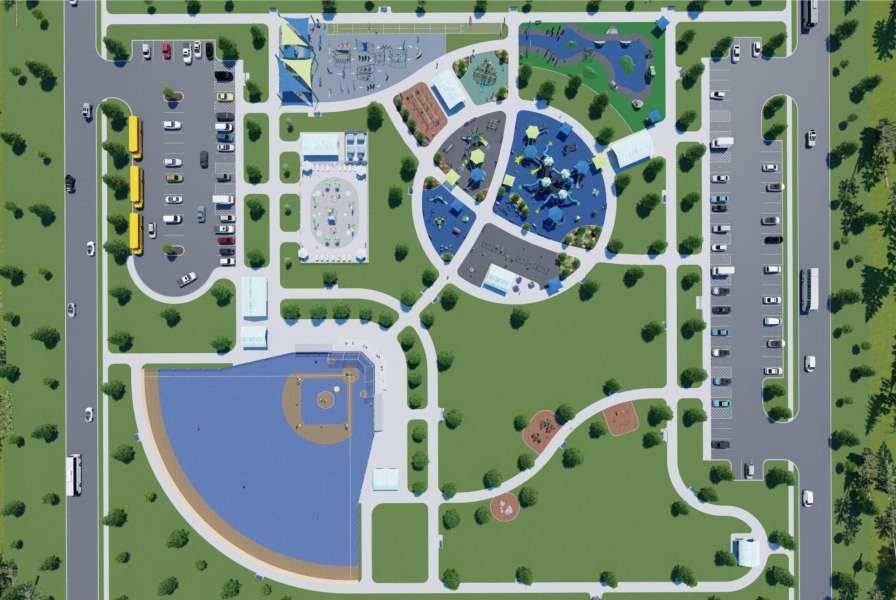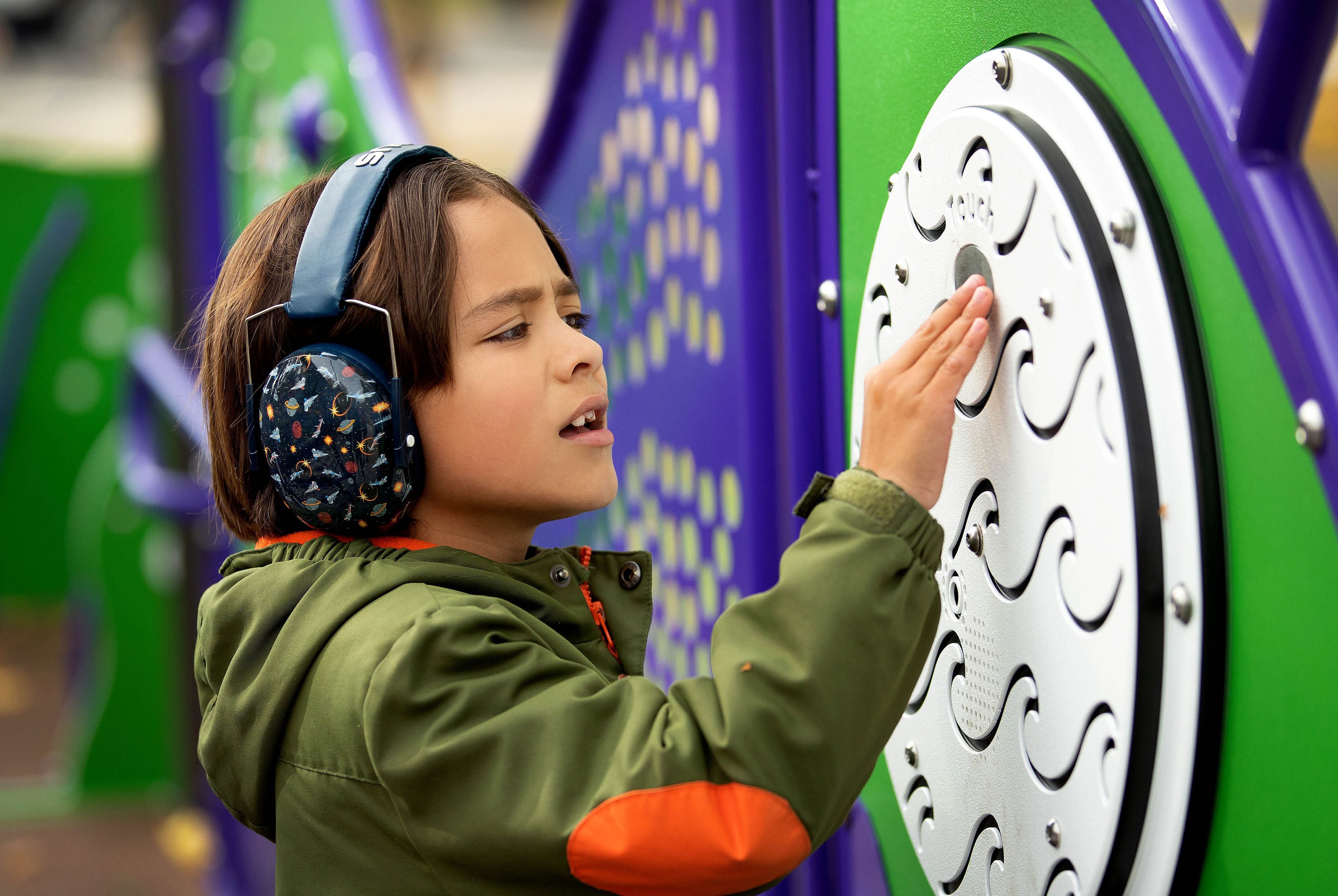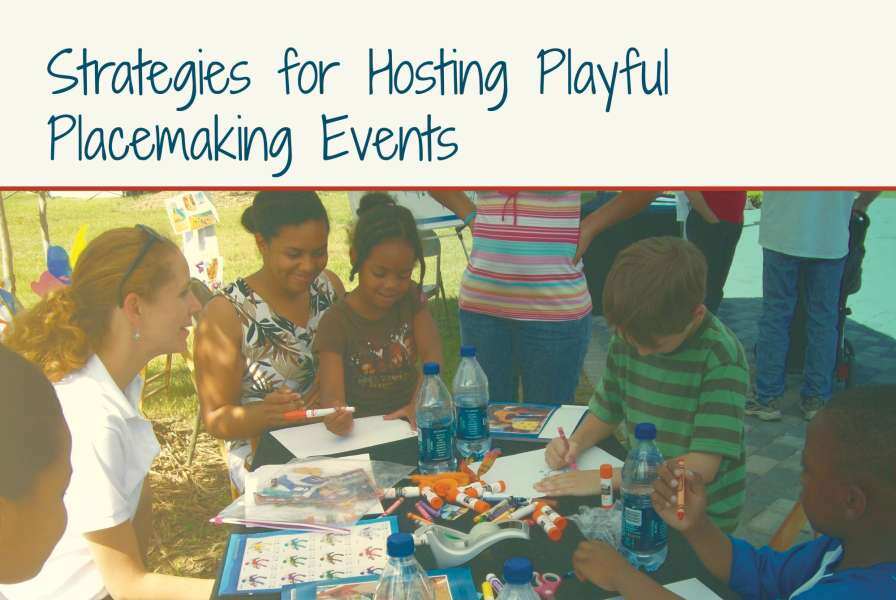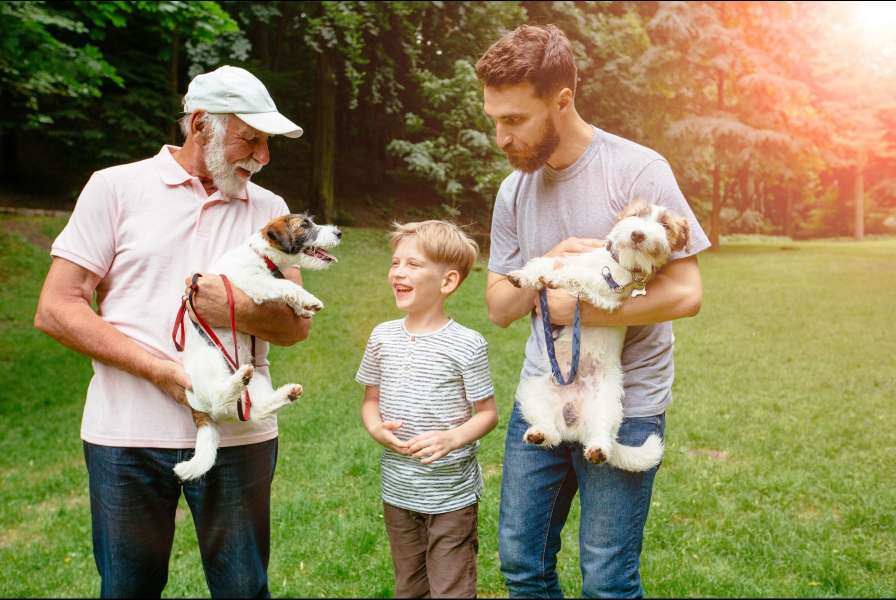Depending on the form and function of your play or recreational area, there are a number of choices you can make in regard to surfacing. The budget, the amount of use the playground or recreational area gets, your ability to maintain the surface, and other factors will help facilitate playground and recreational area surfacing selections. Be sure to follow safety and accessibility guidelines. Playgrounds should always provide protective surfacing. Be sure to ask the supplier for specifications, warranty information, and maintenance guidelines, as they may vary by brand.
Surfacing should meet appropriate guidelines, be readily available in your area, and meet the play or recreational area needs for durability, drainage, and accessibility. Consider climate, maintenance cost, and other variables before choosing. Your supplier can help decide what is most appropriate for each condition.
Surfacing options for playgrounds are generally divided into two categories: loose-fill and unitary. These options can be combined in a variety of ways or used alone.
Also check out our surfacing quick-reference chart here.
Loose-Fill Options
When impacted, loose-fill materials move downward and/or outward, providing excellent fall cushioning but also require ongoing raking and replenishment to keep the materials in place at an appropriate depth. Loose-fill materials need to be installed by using earth berms, timbers, plastic edging, or concrete curbs to contain the materials. Rubber wear mats should be placed in high-impact areas, such as under swings and the base of slides. These are areas more susceptible to displacement.
The CPSC classifies loose-fill materials as organic or inorganic. Organic loose-fill material will compress at least 25% due to use and weathering. Loose-fill material should be avoided for play areas intended for toddlers or dogs as this material can pose a danger of ingestion.
Engineered Wood Fiber (EWF)
 EWF is defined as wood ground to a fibrous consistency. It is different than wood chips or garden mulch in that there is a requirement stated in ASTM F2075 for particle size distribution and purity, which allows the product to “knit” together creating a stable surface for mobility devices. When installing EWF, it is recommended to utilize a layer of gravel for drainage. The next layer should be a geotextile cloth. On top of that should be a loose-fill layer meeting the specifications and fall height requirements of the environment. EWF surfacing should also meet ASTM F1951. This can be accomplished by installing the material to manufacturer’s installation instructions, otherwise, it may not meet accessibility standards. EWF surfaces are better suited for playgrounds, landscapes, and trails.
EWF is defined as wood ground to a fibrous consistency. It is different than wood chips or garden mulch in that there is a requirement stated in ASTM F2075 for particle size distribution and purity, which allows the product to “knit” together creating a stable surface for mobility devices. When installing EWF, it is recommended to utilize a layer of gravel for drainage. The next layer should be a geotextile cloth. On top of that should be a loose-fill layer meeting the specifications and fall height requirements of the environment. EWF surfacing should also meet ASTM F1951. This can be accomplished by installing the material to manufacturer’s installation instructions, otherwise, it may not meet accessibility standards. EWF surfaces are better suited for playgrounds, landscapes, and trails.
EWF FEATURES |
EWF BENEFITS |
| EWF is the most widely used playground surfacing, approximately 75% of the market uses this budget-friendly choice. | It has a relatively low initial cost. |
| EWF is not mulch, wood chunks, or bark chips. It is a product specially engineered for the needs and specifications of the playground industry. | In cases where the budget is limited, choosing EWF may allow you to invest more of your funds into equipment. |
| Wear mats are recommended under swings and at slide exits to reduce raking maintenance. | It can be installed by a volunteer crew, which can save money over professional installations. |
| It is generally installed over a gravel or piped drainage system with a filter fabric that is placed between the fiber and the drainage system to prevent clogging and to avoid material compaction caused by standing water. | Meets ADA guidelines when properly installed and maintained per the manufacturer’s instructions and IPEMA. |
| Since it is a natural material subject to decomposition, it requires periodic “topping off” to maintain the depth required for adequate fall attenuation. | EWF provides an attractive, natural look and provides natural loose parts play. |
| Compared to unitary rubber surfaces, EWF is more difficult to traverse with mobility devices. |
Loose-fill Rubber
 Loose-fill rubber offers the best impact absorbing properties of all the loose-fill surfaces. Check with your supplier for their specification and be sure to ask for their accessibility testing results. Loose-fill rubber is best suited for playgrounds, landscapes, and trails.
Loose-fill rubber offers the best impact absorbing properties of all the loose-fill surfaces. Check with your supplier for their specification and be sure to ask for their accessibility testing results. Loose-fill rubber is best suited for playgrounds, landscapes, and trails.
LOOSE-FILL RUBBER FEATURES |
LOOSE-FILL BENEFITS |
| Rubber chunks are available in a variety of colors | Good “green” alternative for playground surfacing |
| Best ASTM F1292 test results | Drains well |
| Made from recycled materials | Mold, animal, and insect resistant |
| Does not freeze in cold climatic conditions | |
| It will not decompose or be subject to fungal issues, saving money and maintenance | |
| It can be installed by volunteers if desired, saving the customer money over professional installations | |
| Might qualify for environmental grants |
Sand & Pea Gravel
Although considered as a “loose-fill” surface, these materials seldom meet the accessibility standards or ASTM F1951. The surface materials may be used to provide tactile experiences on secondary routes. However, the drawbacks to the surface materials should be carefully considered. Sand can become heavy and concrete-like in wet conditions, thereby reducing its ability to attenuate falls. Pea gravel may potentially be a choke hazard for children or even dogs. Frequent raking and turning can help with their tendency for compaction. CPSC states that sand and gravel are generally used as landscaping-type material that can be layered to certain depths and resist compacting.
Unitary Surfaces
Unitary products include poured-in-place rubber (PIP), tiles, bonded rubber, and synthetic grass. Unitary surfacing does not require raking, compaction, or replenishment, however, it may require sanitization or maintenance due to surface debris, vandalism, movement in the tiles, erosion, poor drainage, or worn areas that result from repeated impacts. When unitary surfacing is in need of repair, it should be done immediately as per manufacturer’s instructions. Always consult the manufacturer’s instructions before applying any chemicals or before pressure washing. Also, consider that some dark colored surfacing materials exposed to intense sun may cause blistering on bare skin. Check with the provider of surfacing if light colored materials are available or include shading to reduce direct sun exposure.
The greatest benefits of unitary materials are less frequent maintenance, predictable cushioning properties, and that the materials stay in place. Poured rubber provides the most consistent accessibility, specifically for people who use mobility devices, and there is generally a higher initial cost. Most unitary materials require a base of compacted stone or concrete/asphalt. The cost of this base should be considered in the overall cost analysis of the surface system. See your manufacturer’s warranty information for the predicted product lifecycle.
Poured Rubber Surfaces

Poured rubber or poured-in-place (PIP) is a popular surfacing choice and consists of two layers, a base layer for attenuation, followed by a colored wear layer. If attenuation properties are not required, the base layer would not need to be installed. The low-density base layer is laid first and cured overnight, followed by the wear layer. EPDM, TPV, or Rubber Crumb/SBR is mixed with a polyurethane binder and poured into place at the site. PIP is to be installed over asphalt, concrete, or compacted stone. Ideally, temperatures should be between 45 to 105 degrees Fahrenheit during the installation of the product; humidity should also be taken into account as it will have an effect on temperature.
Prices will vary but can depend on color, size of installation, and thickness. Prices will generally increase as thickness increases and as color levels increase from all black to 100% color. Color options that mix in black granules will generally be more economical than 100% color granules. This surface requires one of the highest initial investments and may surpass the cost of the equipment as a percentage of total budget. It must also be installed by a trained professional crew. However, over the life of your playground, it will require less frequent maintenance, is not displaced during play, and is easy to clean, as litter will not mix into the product.
Poured rubber offers the greatest design options; colors can be mixed to produce varying hues, or laid side-by-side to create artistic patterns and graphic designs. Additionally, games such as hopscotch can be incorporated to add additional play value. The product is a popular choice for aquatic environments. It is also important to note the choices of urethane; standard aromatic urethanes will initially “yellow” the overall appearance of the color and is especially noticeable on lighter hues. To avoid this, be sure to specify an aliphatic urethane. PIP is best suited for playgrounds, fitness parks, landscapes, trails, and multi-use recreational areas.
POURED RUBBER FEATURES |
POURED RUBBER BENEFITS |
| Requires trained installation crews to ensure it meets safety requirements, is durable, and help prevent failure of a product | A wide range of colors allows for creative designs, graphics, and themed options |
| Thickness can be modified to meet varying critical fall heights within the playground | Creates the best surface for accessibility by creating a seamless surface |
| Installed on-site in two layers | Minimum daily/weekly maintenance consists of occasional cleaning and removing debris |
| Needs to be installed over concrete, asphalt, or compacted stone | Good resistance to flammability |
| Soft, springy feeling underfoot | |
| “Green” option that uses recycled rubber |
Bonded Rubber Surfaces
 Bonded rubber surfaces utilize recycled rubber that is cleaned, then dyed in a variety of colors. Bonded rubber resembles a shred in texture, and consists of one layer, which is also mixed with urethane on site before being installed. Like other unitary surfaces, it provides a great surfacing option that promotes accessibility. Bonded rubber is best suited for playgrounds, landscapes, trails, and multiuse recreational areas.
Bonded rubber surfaces utilize recycled rubber that is cleaned, then dyed in a variety of colors. Bonded rubber resembles a shred in texture, and consists of one layer, which is also mixed with urethane on site before being installed. Like other unitary surfaces, it provides a great surfacing option that promotes accessibility. Bonded rubber is best suited for playgrounds, landscapes, trails, and multiuse recreational areas.
| BONDED RUBBER FEATURES | BONDED RUBBER BENEFITS |
| Needs to be installed by a trained professional to ensure proper installation | Bonded rubber can be installed in a single color, or mixed together to create a subtle, blended shade |
| Quicker to install than PIP | Minimum daily/weekly maintenance consists of occasional cleaning and removing debris |
| Thickness varies by fall height | Creates a natural look |
| Needs to be installed over concrete, asphalt, or compacted stone | Promotes accessible routes of travel for people using mobility devices |
| The shred texture does not lend itself to precise graphic design, but still provides a fun, unique, and colorful appearance to the play area | Made with recycled rubber |
Tiles
 Surfacing tiles provide a single, smooth surface once installed, providing good accessibility. Tile can range from rubber tiles, vulcanized tiles, and even aquatic tiles. Some tiles are manufactured with recycled rubber, others with virgin rubber, and some may not be recycled at all. Tiles usually installed in play and recreational environments are made of recycled rubber and are poured and molded in a controlled environment, rather than onsite as with other rubber surfacing products, so the installation of the product is uniform in consistency and not subject to the site conditions or weather. Installation methods should be followed closely to ensure a compliant and durable finished product. Tiles are installed by adhering to the substrate or fastening the tile together with adhesive or fasteners. Tapered tiles are often used to provide ramp transitions from tile to surrounding substrates. Because they are not poured on-site, they are often used for indoor playground environments when a solid surface is desired. Tiles are best suited for playgrounds, aquatic areas, landscapes, trails, and multi-use recreational areas.
Surfacing tiles provide a single, smooth surface once installed, providing good accessibility. Tile can range from rubber tiles, vulcanized tiles, and even aquatic tiles. Some tiles are manufactured with recycled rubber, others with virgin rubber, and some may not be recycled at all. Tiles usually installed in play and recreational environments are made of recycled rubber and are poured and molded in a controlled environment, rather than onsite as with other rubber surfacing products, so the installation of the product is uniform in consistency and not subject to the site conditions or weather. Installation methods should be followed closely to ensure a compliant and durable finished product. Tiles are installed by adhering to the substrate or fastening the tile together with adhesive or fasteners. Tapered tiles are often used to provide ramp transitions from tile to surrounding substrates. Because they are not poured on-site, they are often used for indoor playground environments when a solid surface is desired. Tiles are best suited for playgrounds, aquatic areas, landscapes, trails, and multi-use recreational areas.
TILE BENEFITS |
TILE FEATURES |
| High durability | Low-maintenance and long wear |
| Some tiles may be available with an interlocking option | Provides excellent accessibility for mobility devices |
| Can be used indoors and outdoors | Durable choice for high use areas |
| Tiles are available in different thicknesses to accommodate various fall heights | |
| Tiles may utilize recycled material | |
| Easy to repair |
Synthetic Grass
 Synthetic grass is a product designed to bring the look of nature to your environment. Synthetic grass can be optionally rolled and seamed over a shock-absorbing, fall attenuation layer-based on-site needs. Infill can be placed in the synthetic grass to stabilize and hold grass blades upright. This product is an excellent choice when blending into the surrounding landscape. Synthetic grass can be specified to meet and exceed ASTM F1292 requirements.
Synthetic grass is a product designed to bring the look of nature to your environment. Synthetic grass can be optionally rolled and seamed over a shock-absorbing, fall attenuation layer-based on-site needs. Infill can be placed in the synthetic grass to stabilize and hold grass blades upright. This product is an excellent choice when blending into the surrounding landscape. Synthetic grass can be specified to meet and exceed ASTM F1292 requirements.
In addition, some manufacturers have developed synthetic grass specifically designed for dog parks. The dog park synthetic grass is tufted and textured differently from other synthetic grass to create a product that is less likely to mat down. Specialized pet systems often feature specifically coated backings that provide extra strength against wear from a dog’s paws and claws. In addition, this type of synthetic grass includes a special infill that provides protection to help fight bacteria from spreading and was designed to be safe to the environment, humans, and four-legged friends alike. Synthetic grass is most commonly used in playgrounds, dog parks, landscapes, and multi-use recreational areas.
| SYNTHETIC GRASS FEATURES | SYNTHETIC GRASS BENEFITS |
| Look and feel of natural grass without the need to mow or water | Meets ADA guidelines when properly installed and maintained per the manufacturer instructions |
| Various types of cushion layers can be used to meet fall attenuation requirements | Appealing natural look and feel |
| Installed over concrete, asphalt, or compacted stone | Some variety in blade look and color may be available |
| Varying densities available for varying applications | Drains well and is soft and resilient |
| Low maintenance | Can be customized with logos, graphics, and a variety of colors |
| Material resembles grass blades which provides a natural, realistic look and feel all year long | Surface temperatures can be lower vs. other surfaces (dependent on infill selection) |
| Dog park specific product is available | Helps eliminate unsightly dead grass spots and mud pits in dog parks |
| Unwanted odors easily flush away with water in dog parks | |
| Does not require chemicals, fertilizers, or insecticides to maintain its natural look and feel |
